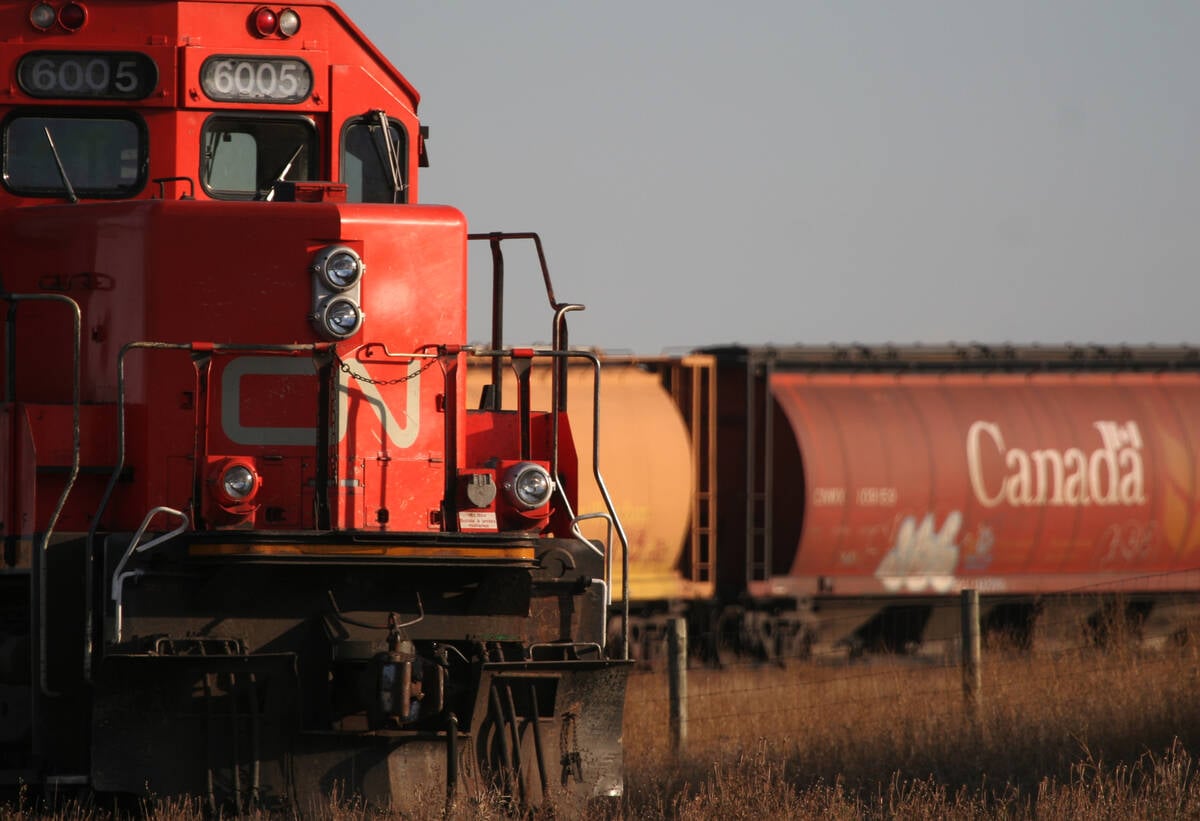CALGARY — Volatility and pressures to the downside from most oilseeds will keep a lid on any major gains, but might also keep lowering trends under control, say analysts about the near-term future for canola.
Lower final production estimates from Statistics Canada did little to improve market prices, but could provide longer-term support for the volatile months to come.
“Oilseeds will remain under pressure overall, despite China’s avoidance of American beans. Canola will remain under pressure as a result,” said Mike Jubinville of MarketsFarm’s ProFarmer Canada.
Read Also

Working groups established to address challenges in the containerized and bulk movement of commodities
CN is working with the pulse and special crops sector on resolving challenges in shipping those commodities.
Jubinville told producers attending the Glacier Media Farm Forum event in Calgary last week that the “sideways markets range is on-track to continue” when it comes to pulse crops and oilseeds.
“Global vegetable oil ending stocks are relatively stable, they are high, but stable … and not overly burdensome,” and that is good news, said the market analyst.
“At 27.5 (U.S. cents per pound for vegetable oil), it appears to have bottomed, although at a lower price than the worst of the 2008 market crisis.
“The one oil that is holding back the market from rising now is palm oil, it is trading at multi-year lows. Inventory is building up there,” he said.
The same trade restrictions on pulse crops that Canada and Australia are experiencing are restricting palm oil imports into India. That oil makes up 60 percent of the international supply of vegetable oils, so “what happens in palm oil matters to all oils.”
Bruce Burnett of MarketsFarm said current drier conditions in southeastern Asia, from the current El Nino, won’t translate into lower palm production for another year and half.
“So short-term support from that won’t be coming,” said the weather and markets expert.
But Jubinville said that overall, ending stocks for canola and rapeseed aren’t a problem for that oilseed.
“The canola market doesn’t have a canola problem, the canola market has a soybean problem,” said Jubinville.
Late last week, StatsCan revised its estimated canola production to 20.3 million tonnes, down one million from its earlier estimates. But that didn’t make a big difference in the markets, indicating that the market believes there are sufficient supplies available.
“We are next to our neighbour who has soybean supply issues and that is the problem for canola,” he said.
“The lower Canadian supply does, however, provide some support for canola overall, but not enough to boost prices,” he said.
Australia’s smallest canola crop in 11 years due to drought also supports the canola, but also isn’t lifting the price.
“China looks to replace some of the Australian supply with Canadian product and that will help with what should be a strong (shipping season),” he said.
Canola can see a $50 per tonne premium over soybeans on the longer term. The canola buyers who prefer it will continue to buy it, but right now is “fairly valued” when compared to soybeans, so other, discretionary buyers who look for value rather than origins or branding will continue to purchase.
“So we are not overpriced where it is right now,” said Jubinville.
While canola may be now correcting for an oversold market, it isn’t likely to rise due to that either.
“$490 might be the initial resistance (for January). If we can break through it, and soy at US$9.20 (per bushel), things could improve a bit,” he said.
“Until we see some production-related issues, $11.50 might be the top of the upside, and that might be $11. I am 40 percent sold on canola now and looking for the next opportunity.
“I might be prepared to wait on my marketing now … looking for a higher (trend) in March, April and May”.
Jubinville said he is looking for deferred delivery opportunities and cash-basis specials that might show up.
“High tens in Saskatchewan or an $11. That could be it,” he said.














